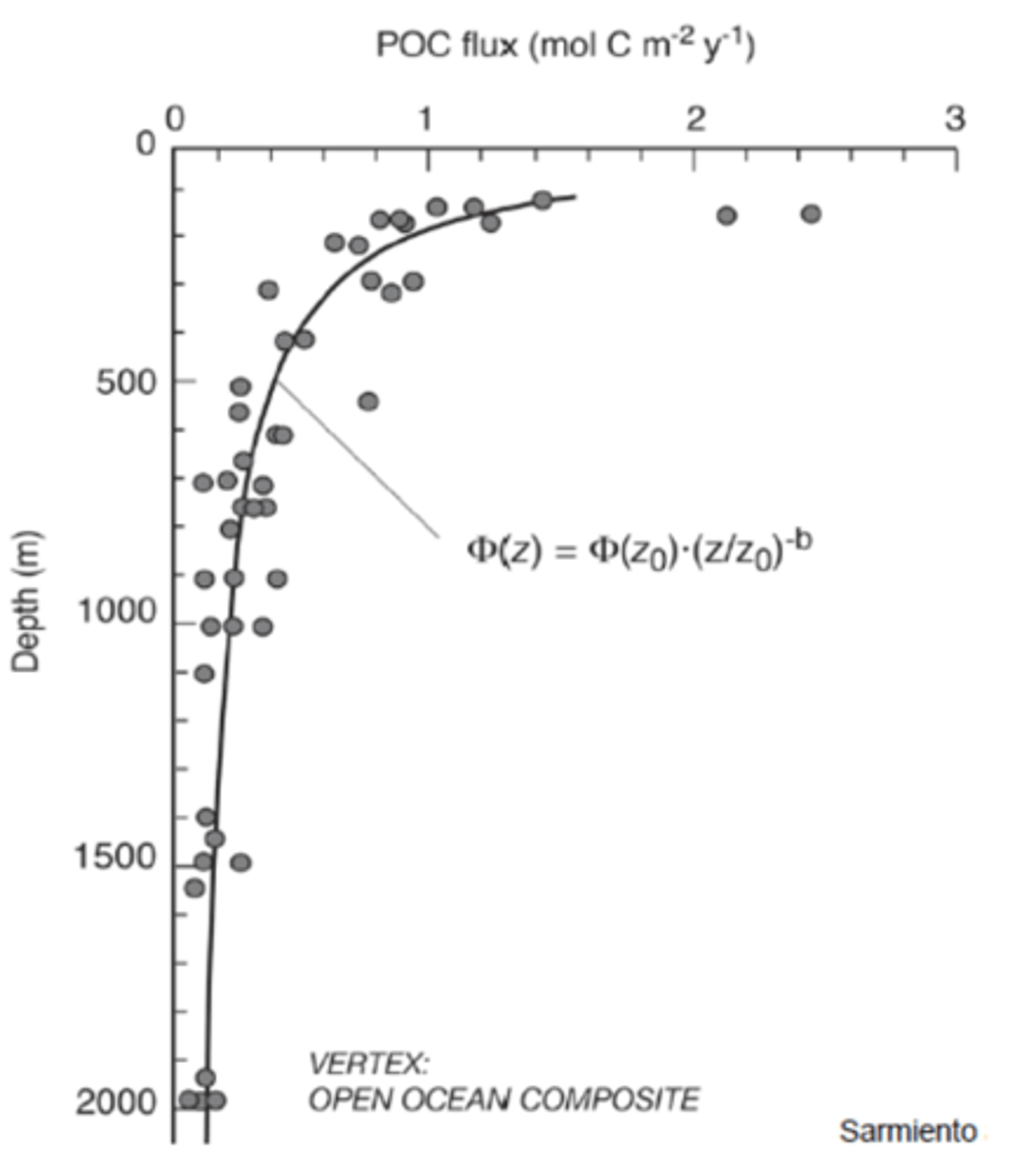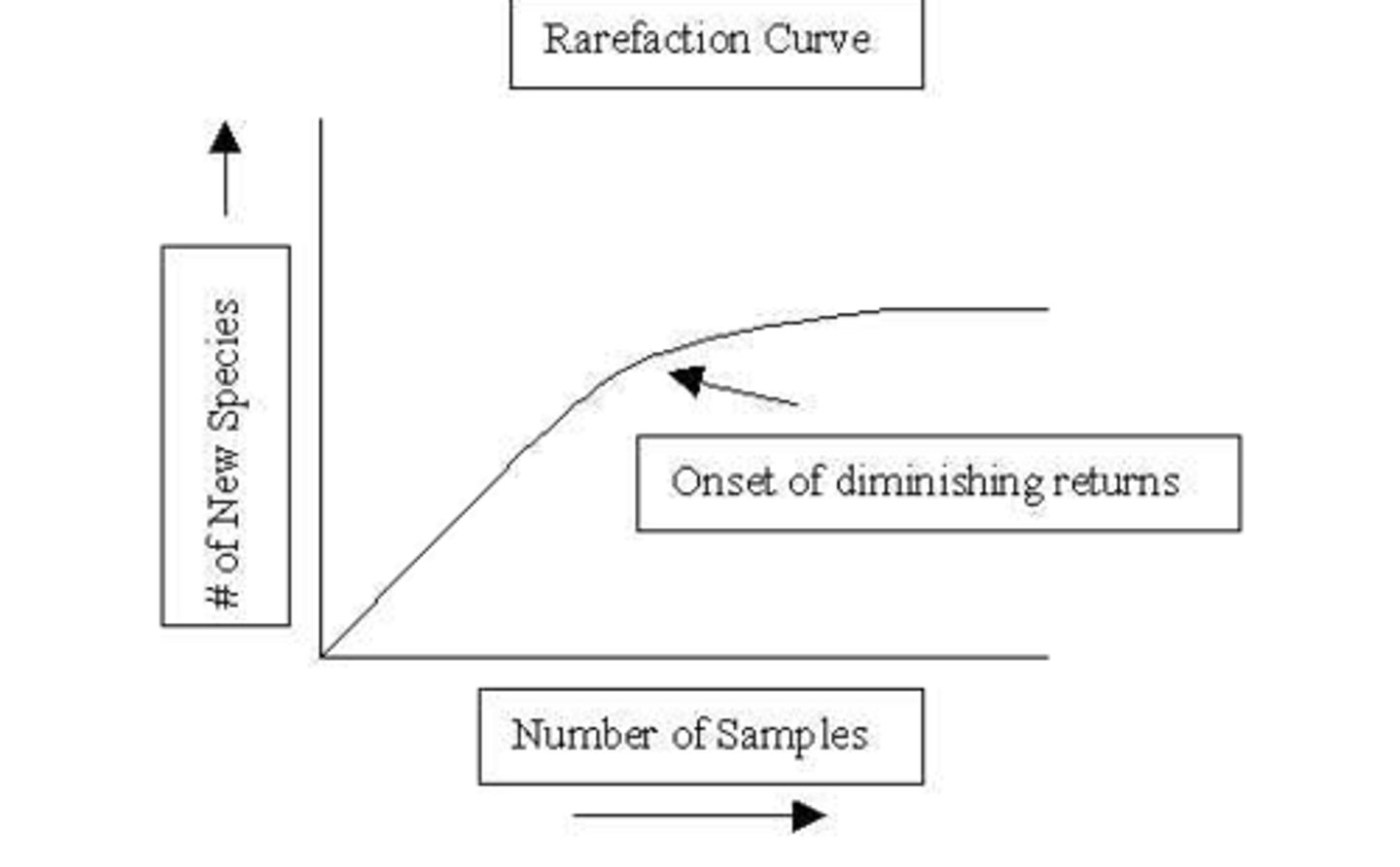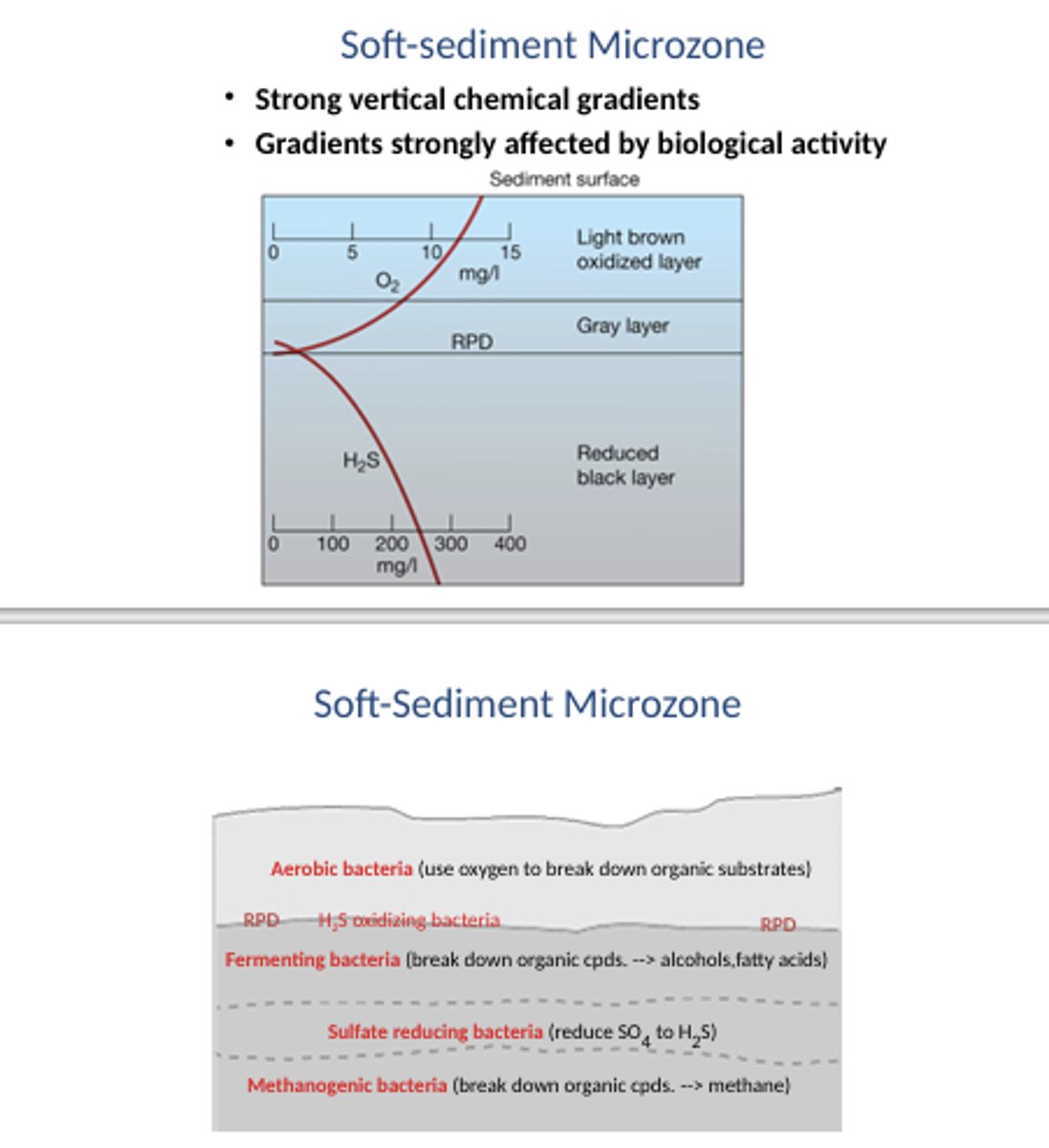Marine Biology Exam 2: Key Terms & Definitions for Success
1/94
There's no tags or description
Looks like no tags are added yet.
Name | Mastery | Learn | Test | Matching | Spaced |
|---|
No study sessions yet.
95 Terms
rocky intertidal zones
beaches, estuaries, mangroves, tide pools
- important for viewing impacts of sea level rise, climate change
tidal influence on rocky intertidal zones
- caused by sun/moon
- affect organisms
1) water changes/air exposure
2) currents
3) varying salinity/dissolved compounds
Diversity controls
1) area hypothesis: tropical climates are older/larger = more diversification
2) time stability hypothesis: older the habitat, more diverse it is
3) intermediate disturbance hypothesis
4) predation: keystone predators minimize competition
community issues
- competition
- predation
- limited space
intertidal zonation
- occurrence of dominant species in distinct horizontal bands
- usually single sessile species
factors impacting zones:
1) water/tide/spray:
2) physical: wave shock, gas exchange, feeding time
3) biological: competition, predation (changes with tide)
4) oxygen: some cannot respire during low tide (will reduce metabolic rate)/physiological intolerance
upper vs lower zones
upper: controlled by physical factors
- limits where organisms live
lower: controlled by biological factors
- presence/absence of another organism
- predation may promote coexistence of competing prey species
Connell experiments/paine experiments
?
alternative stable states
- different communities develop in the same area under similar environmental conditions
- random effects of disturbance
ex) ice scouring: in winter ice scrapes away at rocks, either forming an algae or mussel dominated ecosystem
unified theory of diversity
dN/dt = rN (K-N)/K
N = # indiviudals
K = carrying capacity
- logistic growth
- N = K: no more growth (dN/dt = 0)
- N<
importance of predation
- as predation increases, competition decreases
- as predation increases, diversity increases then decreases
see graph
deep seafloor
- covers most of planet
- accounts for 60% of ocean
- stable (consistent for 8000 yrs), but extreme in:
1) temp
2) pressure
3) productivity
environmental factors
1) low flows: depositional, tidal to abyssal circulation
2) pressure: immense
- 1 atm every 10 m
3) light: none
4) temp: 2-4 degrees C (cold)
- vents are exception
5) salinity: very high
6) oxygen: plenty
- high at epifaundal
- can be depleted infaunal
deep sea sampling
- ROV, AUV
- nets, dredges, trawls, bottom grabbers, corers
- still a lot more species to be found
food sources
rain of detritus
- fecal pellets
- marine snow
- molts
- dead phytoplankton
- dead fish/whales
NO primary productivity
< 0.25% organic content
benthic connection to surface pp
- Responds to detritus from spring bloom
- benthic Biomass/growth correlates with surface pp
- benthic respiration occurs highest at equator (more material)
- biomass decreases exponentially w/ depth/distance from shore
Martin curve
F = F100 (z/100)^-b
- Z = trap depth
- F100 = POC flux at 100 m
- B = unitless parameter

Martin curve interpretation
- Large particles fall faster: dominate flux
- Flux declines exponentially with depth
- 1% or less OM in euphotic zone reaches deep sediment
vertebrates
benthic inverts classification
1) phylogeny
2) size
3) sediment location
4) feeding mode
size
Microfauna: <0.1 mm
Meiofauna: 0.1-1 mm
Macrofauna: > 1mm
Megafauna: >>> 1 mm
see notes table with scientific names
most abundant megafauna
echinoderms
- Usually penta-radially symmetrical
- Exclusively marine
- tube feed and water vascular system
- Complex life cycle w/ free swimming larval stages
sea urchins
- echinoderms
- Rigid, spherical body w/ movable spines
- Larvae are bilaterally symmetrical
- Develop into pentaradially symmetrical as adults
sea cucumbers
- echinoderms
- 2-200 cm
- 5 rows of tube feet: like seams on a football tentacles near oral end are specialized tube feet
most abundance macrofauna
polychaetes
- Segmented worms
- Benthic forms have reduced # of segments, not as pretty
2nd most abundant macrofauna?
crustaceans
1) isopods
- Exclusively benthic
- Broad range size
2) amphipods
- 1mm - 30 cm
- Detritivores, grazers
- Epibenthic
most important meiofauna
nematodes
- Very small <1 mm
- Detritus eaters = deposit feeders
other) Harpacticoid copepods
important meiofauna
- Ciliates
- Eat bacteria
- Bacteria do majority of metabolism (respiration) in benthic communities
shallow vs deep benthos (abundance and diversity)
Deep: open space, patchy, low abundance, high diversity
Shallow: crowded, zones/patches driven by physical factors, high abundance, relatively low diversity
rarefaction curve
- plotting the expected species richness against the number of individuals sampled
- inc # of individuals means increased number of species recovered (until a plateau)

area hypothesis
- large area promotes speciation and allows for more species to coexist
- Bigger habitat size = more species
- bc large habitats can have more niches, i.e more niche space for more species
Time Stability Hypothesis
- accommodation of species over time in a stable environment
- Long term stability = less die off
- Constant rate of invasion increases species
shallow benthos importance
- Food for many ground fish and birds
- Biogeochemical cycles
- Taxonomy, evolution, and phylogeny
2 benthos types
1) soft bottom
- organic rich, can sink
- Top layer: light brown, oxidized
- Lower layer: black, reduced
2) hard bottom
- rocky
why isn't there O2 below surface sediment?
- Supply of org. material is high to sediments bc the water is shallow or pp is high (or both)
- Supply of organic material and degradation of org material > diffusion of O2 into sediments
anaerobic metabolisms
- organisms in anoxic areas
- by bacteria, archaea, few protists
1) Fermentation: partial oxidation, release of organic material
2) Sulfate reduction: SO4 → H2S by bacteria and archaea
3) Methanogenesis: CO2 → CH4 only by archaea
sediment microzones
TOP
- aerobic bacteria
- fermenting bacteria
- sulfate reducing bacteria
- methanogenic bacteria

benthic invertebrates help...
- Break up detritus: creating more surface area for microbes
- Bioturbation: puts O2 into otherwise anoxic mud (allows O2 to get deep into sediments, changes what can live down there)
soft benthic organisms
1) Bacteria, archaea, protists
2) Benthic algae (if shallow enough for light to reach)
3) Many invert types
shallow benthic organisms classifications
1) phylogeny
2) size
3) lifestyle/location in sediment
4) feeding mechanism
benthic organism size
microfauna: Algae, copepods, crustaceans, ciliates, bacteria/archaea
meiofauna: Wormlike, interstitial meiobenthic animals, diverse phyla
macrofauna: Snails, worms, crustaceans
deposit feeding can be __ or __
1) Selective: individual food particles picked out of sediments
2) Non selective: ingest everything (sediments, detritus, microbes)
*choice depends on deposit feeder/detritus
symbiotic microbes help...
- Help in nutrition of benthic inverts
- Provide enzymes to hydrolyze polymers
- Chemolithotrophic bacteria provide carbon and energy: use inorg. compounds to make org. material from CO2
ex) tube worms sulfur oxidation
suspension feeding can be __ or __
1) Passive: go with the flow (sponges + corals)
2) Active: actively create currents (polychaetes, annelids, bivalve mollusks
- Particle not just caught by sieve or distance between cilia
- Cilia can retain particles much smaller than overall filtering unit size
- Need to be selective to avoid clogging
hydrothermal vents
- range 2000-8000 m
- found where new crust forms (spreading centers)
vent environmental factors
1) Low flows, tidal-abyssal circulation
2) Immense pressure
3) Little-no light
4) Cold temp
5) High salinity
6) Plenty of O2
food sources near vents
- POC raining detritus
- chemosynthetic bacteria?
vent plumbing steps
1) Inorganic compounds reduced by hot water (400 C)
2) Water sinks into sediment, heats up and becomes metal rich
3) Exits through vents, cools and metals precipitate out
4) Chimneys form (solid) as metal sulfides precipitates out at cool temps (up to 5 m tall)
tube worms
- first organisms at a new vent site
- up tp 37 cm
- heat resistant, live in super high hydrogen sulfide amounts
characteristics
1) No digestive tract: no mouth/anus
2) Trophosome tissue loaded with sulfur granules
other organisms: crabs
vent life supported by which process?
sulfide oxidation:
H2S +2O2 → SO42- + 2H+
- H2S = from vent
- 2O2 = from ocean
allows bacteria to gain a lot of energy (makes more biomass)
Chemoorganotrophy vs chemolithotrophy
chemoorganotrophy
- Aerobic respiration:
CH2O + O2 = CO2 + H2O
- CH2O is organic compound
chemolithotrophy:
- Replacing CH2O with H2X (another electron donor)
- usually sulfur
- O2 = e- acceptor
Where is the carbon coming from to build biomass?
CO2
unique vent site
The lost city
- 20 km west of mid atlantic ridge
- Metal poor, pH 9-11, >90 C water
- Dominated by carbonate towers 60 m tall
how to categorize organisms based on sources (carbon, energy, reducing power)
1) Source of carbon
- CO2 = autotroph
- Fixed organic C = heterotroph
2) Source of energy
- Sunlight = phototroph
- Preformed molecules = chemotroph
3) Source of reducing power
- From organic molecules: organotroph
- From inorganic molecules: lithotroph
Photosynthesis vs chemoautolithotrophy
1) Energy source
- Light vs chemical energy
2) Primary producers
- plants/algae vs chemolithotrophic bacteria
3) Carbon fixation pathway
- Same for both
vent symbionts
- Endosymbionts
- Live in tissue of larger organisms
- Require H2S, O2, CO2
vent symbionts benefits
Animals get:
- food from bacteria-release of organic material from living cells, dead cells
- Detoxification of H2S
Bacterial symbionts get:
- steady diet of H2S and O2
- protection from grazers
sulfate based vent communities
- Chemosynthetic bacteria are pp's (not phytoplankton)
- Source of energy: hydrogen sulfide (not light)
- Symbiotic bacteria are key
vent colonization
- planktonic larvae swim around and hope to get lucky
- Gene flow between sites is low
did life start at hydrothermal vents?
- First cell likely chemoautolithotroph
- Elements present in ancient enzymes abundant at vents
- Thermophiles/ hyperthermophiles (withstand very high temps) are at base of tree life
so yes?
mesopelagic zone
200-1000m
physical aspects of mesopelagic
1) Temp
- weak vertical mixing
- declining temps
2) Pressure
- increases 1 atm every 10 m
- fish/inverts vertically migrate
- enzymatic activity drops as pressure inc.
3) Light (quantity and quality)
light quantity
- Attenuated with depth
- diffuse attenuation coefficient: Kd (varies in diff areas)
light quality
- sunlight in zenith, snells window
- overall diffuse light field
- spectral composition
Coastal waters: greening
Open ocean: blueing
midwater biomass and biodiversity
biomass:
- very dilute compared to surface
- exponential decay as you move down
biodiversity:
- more stable than surface
- less decay as you move down
lost of archaea in deep water!
mesopelagic organisms
1. Crustaceans
- Amphipods
- Copepods, ostracods
- Decapods, euphausiids
2. Molluscs
- Pteropods
- Tereropods
- cephalopods
3. Ctenophores
4. Cnidarains
5. Echinoderms
6. Annelids
7. chordates
- Urochordates, vertebrates
mesopelagic adaptations
1. crypsis
2. bioluminescence
3. energy and metabolism
crypsis
- organisms are red/black
- makes them virtually invisible bc of lack of red light in water
- Can use mirrors to mimic background light: bouncing ambient light back to the predator at the correct angles
Bioluminescence
counterillumination
- emit blue light to match downwelling light field
- light output matches surrounding irradiance
uses for bioluminescence:
1. Avoiding predators
2. Catching prey
3. Finding mates
diverse organisms use common approaches: luciferins only slightly diffin each organism
energy and metabolism
need to
1) maximize energy input
2) minimize energy expenditure
maximizing energy input
1) predatory lifestyle
- Few filter feeders
- Eat whenever/whatever
- Adaptations: large upward looking eyes, large heads (cephalization), disarticulating jaw, teeth that trap, extensible stomach, long GI tract
2) Reduce density
- Store light ions
- Store lipids in tissues/swimbladder
- Reduce hard parts
- Sinking rates: counteracted by buoyancy
minimize energy expenditure
1) lower metabolic rate
- ex) pelagic animals w/ image-forming eyes: need to fuel locomotory activity for avoiding predators decreases as less light is available for visual predation
2) efficient growth
- Less metabolic demand = more energy for growth
- Less energy is required if tissues have more water
3) slow growth
- Life in cold/dark water generally slower
- Body mass increase of bathypelagic species = close to exponential
4) reproduction
- Difficult to find mates
- Solution: hermaphroditism
mesopelagic organisms generalizations
1. Slow: metabolism, growth
2. Efficient: vision, growth
3. Opportunistic: occasional big lunch
4. Flabby: watery tissue, weak bones
5. Bioluminescent: common
estuaries are
- salt+freshwater
- geologically young
- ephemeral: here for short period before modified
- impacted by sea level
define estuaries based on
1) morphology
- DE bay is a drowned river valley
2) geology
3) circulation
4) tides
estuary salinity
- PSU: practical salinity units
- ppt: parts per thousand
- no units
ex) east coast 30 ppt, full strength 35 ppt
estuary types
- salt wedge
- well mixed
- partially mixed!
- fjord
- reverse
Estuarine flow
- Low density freshwater at surface: flows toward ocean
- Denser more saline water: flows upriver
- Net flow: towards ocean
- Most estuaries are partially mixed
estuaries are __ rich, which causes __+__
nutrient rich
- high production + biomass but LOW diversity (intermediate salinities)
- nursery for organisms
blue crabs
callinectes sapidus
- range from argentina to nova scotia
- Support commercial/sport fisheries
blue crab life history
depends on estuary!
- Spawns in estuary in summer
- Larval develop on continental shelf
- Juvenile nursery in estuary
- Adults in estuary year round
blue crab transport
1) Spawn in estuary
2) Move southward in coastal ocean
3) Mixed offshore
4) Move northward in coastal ocean
5) Recruitment (juvenile-adult stages) to estuary
transport depends on..
wind direction/currents
- Northward: how larvae are transported back north
- Southward: how larvae are transported back into estuary
blue crab life cycle/
success dependent on...
1) Eggs
2) Zoea
3) Megalopa
4) Juvenile crabs
5) Adult crabs
depends on chance: many contestants, few survivors
important species DE estuary
- Blue crab: callinectes sapidus!
- Menhaden: brevoortia tyrannus
- Oysters: crassostrea virginica
- Shad: alosa sapidissima!
- Sturgeon: acipenser oxyrhynchus
Catadromous vs. Anadromous
- Catadromous = adults in river, spawn in saltwater sea
ex) American eel
- Anadromous = adult in sea, spawn in freshwater
ex) Salmon
shad
- Anadromous
(Return after 3-5 yr in ocean)
- extensive migrations
- stopped spawning bc of anoxic barrier south of PA
- O2 has increased, but fish still haven't gone back up
shad still not recovering bc of...
- Ocean fisheries catch adults
- Excessive predation + competition (Alternative stable state)
- Habitat destruction, not just pollution
oxygen is a good index of..
water quality
- Solubility of O2 decreases with temp + salinity (Warmer/saltier water holds less gas)
- Solubility of O2 increases with pressure
optimal O2 for fish
- general level: 3 mg/L
ex) Shad need 5 mg/L
ex) Mummichog can go down to 1 mg/L
- Saturation levels 8 mg/L
hypoxic areas are less than
2mg/L O2
Atlantic sturgeon
- Evolutionarily old
- live very old, be very big
- 6 yrs in estuary, move to ocean, return to spawn
- fished for caviar, overharvisting of flesh and eggs
- now only 250 returning to DE river
sturgeon not recovering bc of
- Fisheries bycatch mortality
- Boat + propeller strikes
- Water pollution/poor water quality
- Habitat loss, deepening/dredging
horshoe crabs
Limulus polyphemus
- related to arachnids
- Living fossils
- food for many fish/birds
red knots and horshoe crabs
- Distribution determined by horseshoe crab eggs
- Arrival to spring months when horseshoe crabs lay eggs
- Decline in red knots attributed to horseshoe crabs
horshoe crabs used for
- Fertilizer in 19th century
- Blood for detecting endotoxin
- Bait for fish (eel) and whelk